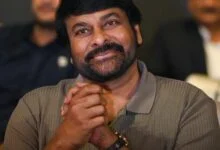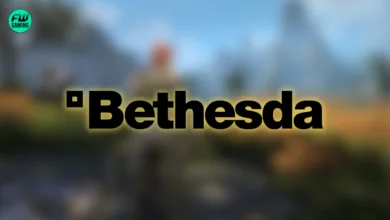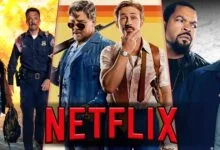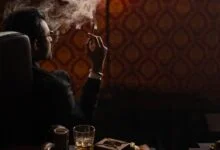Justice League: Crisis on Infinite Earths Part 1 Review

When it comes to iconic DC storylines, none looms larger than Crisis on Infinite Earths. Published between 1985 and 1986, the multipart story was intended to be both a celebration of DC history in time for its 50th celebration and also to clean up its years of confusing continuity. It was a massive crossover event unlike any in comics before, and it changed the industry. It not only reset DC’s continuity but also reshaped it, and for decades, the company has made Crisis part of its identity. It helped popularize multiverse storytelling in a way that has seeped into mainstream pop culture with Spider-Man: Into the Spider-Verse, Everything Everywhere All At Once, and even the MCU multiverse saga. Crisis on Infinite Earths is now likely as important a comic book as Watchmen or The Dark Knight Returns in terms of cultural impact.
Because of the complications of the storyline with various characters across different realities and the massive scope, DC has rarely ever tried to adapt it until 2019, when The Arrowverse used it as a major crossover event, uniting their shows and looking to clean up their own continuity. Before James Gunn and Peter Safran took over DC Films, rumors circulated that then president of DC Films, Walter Hamada, wanted to reset the DCEU with Crisis on Infinite Earths before it was scrapped.
Now, the epic story is finally getting the DC Animated Movie treatment with a cinematic trilogy in 2024. Justice League: Crisis on Infinite Earths – Part One has recently hit shelves, hoping to begin a nice year-long treat, seeing that the DC live-action film slate is pretty slim until James Gunn’s DCU launches.
The film takes the basic story of the original 12-part comic series from writer Marv Wolfman and the late-great George Perez (who gets a dedication following the end-credits) that sees the entire DC Multiverse threatened by an anti-matter wave. An alien being named The Monitor and his aid, Harbinger (who here is an amalgam of another Tomorowverse hero), recruits a team of heroes from across the Multiverse to combat the coming apocalypse. The film also uses The Flash to act as a framing device as he jumps from across time to various points in his life. The Flash, a being who can traverse time and space and various realities, could be the key to saving this and every reality.
Failed Adaptations Stretch Things Too Thin

Justice League: Crisis on Infinite Earths
- Release Date
- January 9, 2024
- Rating
- PG-13
- Runtime
- 1 hr 33 min
- Solid animation that feels like a comic come to life
- Finds a way to integrate a vast array of Tomorrowverse characters into the main story.
- Is one-third of a movie.
- Lacks the imagination and spirit of the original comic to fully embrace the various other universe.
- Feels like part of a Justice League movie and part Crisis on Infinite Earth film stitched together
- Will leave the audiences wanting more but in an unsatisfied way.
Since 2007, with the release of Superman: Doomsday (an adaptation of The Death of Superman), Warner Bros. Animation has been adapting some of its most iconic comics into animated films. All-Star Superman, Batman: Year One, The Dark Knight Returns, and The Killing Joke are just a few of the iconic DC titles that have been given animated films. Yet Crisis on Infinite Earths was going to be different. Not only would it be an adaptation of the comic, but it would also be weaved into the canon of the now-running interconnected films in the DC Animated Universe, dubbed The Tomorrowverse, which started in 2020 with the release of Superman: Man of Tomorrow.
This franchise has made straight adaptations of classic stories (like Batman: The Long Halloween) and also put its own unique spin on comic book stories (Superman: Man of Tomorrow is a loose adaptation of American Alien while Green Lantern: Beware My Power draws from both “Emerald Twilight” and Rann-Thannagar War). Yet now Justice League: Crisis on Infinite Earths is an adaptation of the comic and the final chapter in the DC Tomorrowverse. This puts a lot of pressure on it, which ultimately might be what hurts the film.
The biggest comparison is to another Warner Bros. property: The Hobbit. The Hobbit was originally intended to be two movies, but just six months before the release of the first film, it was announced the two movies would become three, meaning the material would have to be stretched thin. By the time The Hobbit: An Unexpected Journey hit theaters, much of the audience excitement quickly subsided, as it was apparent An Unexpected Journey was mainly set up with very little to a satisfying conclusion.
This is the same issue that Crisis on Infinite Earths – Part One falls into. Apart from a few brief multiversal framing devices throughout the film, the big meat of the story that fans are excited about (what DC has been marketing) doesn’t come into play until an hour into a movie that is only 90 minutes. Just like The Hobbit: An Unexpected Journey, the movie just sort of ends at an odd point with no sense of build or hype. The movie ends without even revealing who the true big bad is for the upcoming films.
Tying Together the Multiverse in a Clumsy Way
That doesn’t mean the story for the rest of the movie is bad; in fact, frustratingly, pieces of a solid movie are here. It manages to weave many past lead characters like Superman, Batman, Green Arrow, The Flash, and Supergirl into the narrative in satisfying ways. The film is presented through the eyes of Barry Allen, aka The Flash, as he keeps slipping through time throughout various points in the Tomorrowverse history. This allows the story to fill in the gaps left by the confusing timeline of the Tomorrowverse.
The film answers the questions of who is in the Justice League and what exactly is their status, and fills in major gaps between Batman: The Long Halloween and Superman: Man of Tomorrow through projects like Green Lantern: Beware My Power and Justice League: Warworld. The Flash as a time traveler and a multiverse traveler is a solid pick to hang this type of story on, but it also feels at times more like a Flash movie with DC guest stars than a true Justice League movie.
The first half of the movie feels rather disconnected from the main plot. It shows the origins of how this universe’s Justice League came together and their first mission, as well as a stop on Earth-3 to meet the villainous version of the Justice League known as The Crime Syndicate. But both those stories feel like they could be their own Justice League movie and not tacked onto Crisis on Infinite Earths. It does feel like, at one point, they were meant to be their own film but were given the Crisis on Infinite Earths branding to make it feel more important.
Into the Tomorrowverse
It certainly is cool to see a wide array of characters on The Monitor’s ship from different Earths. Fans will have fun going through the scene and finding a fun mix of characters from well-known cult heroes like Swamp Thing and The Metal Men mixed in with obscure characters like Amazing Man, The Challengers of the Unknown, the Blackhawks, and Uncle Marvel. There is even a fun Watchmen reference where Charlton Comics characters Blue Beetle, Nightshade, and Question (the inspirations for Nightowl, Silk Spectre, and Rorschach, respectively) meet each other. Yet, the big issue is that the movie forgets the fun of the original Crisis on Infinite Earths — the clash of different universes’ heroes and styles.
That storyline saw heroes from various universes and publications coming together. Since the Tomorrowverse is so new and the character designs are all the same, these different heroes have no distinguishing features from across the multiverse. Any of these characters can be from the main universe as the hero, and in big crowd shots, it’s confusing to know which heroes are from the main universe and who are supposed to be a multiversal version.
The Arrowverse adaptation not only featured characters from that universe but also past DC live-action projects like Superman Returns, Smallville, Adam West Batman, and Lucifer, to name a few, to feel like a massive epic crossover of reality truly. It seems like a better way to depict heroes from different realities coming together would have been by featuring the rich visual styles from across DC history, like Batman: The Animated Series, Teen Titans, Young Justice, and the past DC Animated Universe. In 2009, the Teenage Mutant Ninja Turtles did a similar multiverse crossover featuring the Teenage Mutant Ninja Turtles from the 1980s series interacting with the then-modern 2003 version, and that felt more in keeping with the spirit of the original Crisis on Infinite Earths than this animated adaptation.
As with the other Tomorrowverse films, the animation is a mixed bag. The animation is clean and defined but can also look a little cheap, with there being a lot of dead air in between dialogue. Either subtle or no movement can make scenes feel awkward and sluggish when they are trying to feel more real.
The voice cast is well suited for their parts, from Darren Criss still being a delightful Superman and Jensen Ackles being an inspired pick for Batman. Yet this is mainly Matt Bomer’s show as The Flash, and he gives a very earnest, sincere take on the character that harkens back to his Silver Age roots that no other adaptation has ever really gotten. With the scale of the film being so big, it is a shame that stars like Alexandra Daddario as Lois Lane, Stana Katic as Wonder Woman, or Keesha Sharp as Vixen don’t get much to do, but hopefully that is rectified in the sequels.
A Disappointing Beginning to the Crisis of Infinite Earths
Overall, Justice League: Crisis on Infinite Earths – Part One is a frustrating experience. It not only feels like one-third of a film, but also like a film at odds with itself. It is left trying to be an adaptation of a classic comic book without being able to fully embrace the spirit of the comic. Its attempts to fill the gaps in its own confusing timeline that will leave casual viewers scratching their heads and hardcore fans frustrated. Here is hoping the other two entries are able to really flesh themselves out, and maybe a longer director’s cut that merges the three parts together will come along and fix some of the errors.
As of right now, though, Justice League: Crisis on Infinite Earths – Part One is The Hobbit: An Unexpected Journey of DC animated films. There is a lot of hype and a great deal of talent behind it, but it is an unsatisfying movie in its own right and a weak start to an epic story. The film is available to buy on digital platforms like Apple TV, Vudu, and more. You can watch it through YouTube below:











